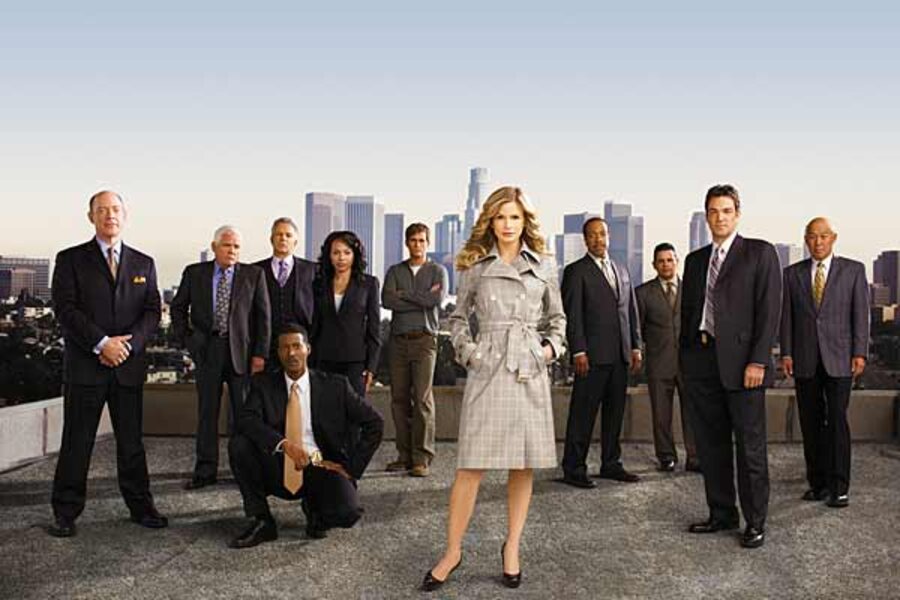'The Closer' opened doors for women – and for basic cable
Loading...
| Los Angeles
Deputy Los Angeles police chief Brenda Lee Johnson returns Monday tonight. For those who have not tuned into the TNT crime dramedy “The Closer,” launching its sixth season at 9 p.m., this is a show about a brilliant investigator who happens to wear flowered dresses, love shoes and chocolate, and cries over her dead cat’s ashes. The quirky series owes as much to Helen Mirren’s groundbreaking British procedural, “Prime Suspect,” as to Peter Falk’s deceptively goofy PI, “Columbo.”
But in a singular and important way, it also has expanded the vocabulary of what is acceptable for women as seen through the lens of popular culture, say gender experts and media mavens.
“We’ve certainly seen women in powerful positions before," says author and gender researcher Maddy Dychtwald, pointing out Angie Dickinson in 1974's “Policewoman,” and “Cagney & Lacy” from 1981. But those women were largely token in a sea of dominant males, and most important, strove to be like the men that surrounded them.” In contrast, Dychtwald says the former FBI interrogator played by Kyra Sedgwick, “retains (and revels in) her femininity, keeps her composure, can handle the two 'sexist pigs' who bait her due to their jealousy and insecurities, and not lose her head.”
The character – a manners-conscious Southerner from Atlanta – often juggles a somewhat sweetly dysfunctional home life, where she is now married to an FBI career man, with the complications of “closing” a case with a confession and managing the crime team she leads.
“The show paves the way in the hearts and minds of viewers, both female and male, and for women every where who watch the show, to owe their power, their female personality, the unique womanly qualities that make them effective, just as Brenda does in getting criminals to confess,” says Ms. Dychtwald, adding that the character is, “after all, the ultimate closer when it comes to interrogation and sweetly, cleanly, amazingly extracting the truth out of guilty suspects.”
Ratings for the show have hit record highs – some 8 million – a whopping number for a basic-cable program. Series star Ms. Sedgwick just received her fifth Emmy nomination this past week. The drama’s success has helped usher in a wave of opportunities for mature actresses over the past half decade, including Holly Hunter in “Saving Grace,” Mary McCormack in “In Plain Sight,” Jada Pinkett Smith in “Hawthorne,” and Glenn Close in “ Damages.”
Being in the basic cable universe has allowed the genre to develop “away from the rating pressures that drive the broadcast networks,“ says Robert Thompson, founder of the The Bleier Center for Television and Popular Culture at Syracuse University. At the same time, he notes, this splintering of the viewing universe into so many platforms on basic, premium, and broadcasting channels, “means that no single show will ever have the kind of widespread cultural impact that such era-defining shows as Mary Tyler Moore and even Murphy Brown were capable of having,” he adds.
Beyond gently tweaking the popular image of women in power, "The Closer" has helped redefine the power balance between basic cable and broadcast networks, says Fordham University media expert Paul Levinson. Just glance at the equal number of recent Emmy nominations for basic and premium cable shows is confirmation, he adds. Beyond that, says More Magazine Entertainment Director Kathy Heintzelman, the off-season placement – the show launched in the summer and continues to air its seasons in counter-balance to the traditional network schedule – has helped redefine viewing habits. “It’s helped people get used to the idea that summer is a time to watch original series on televisions,” she adds.
Related:





